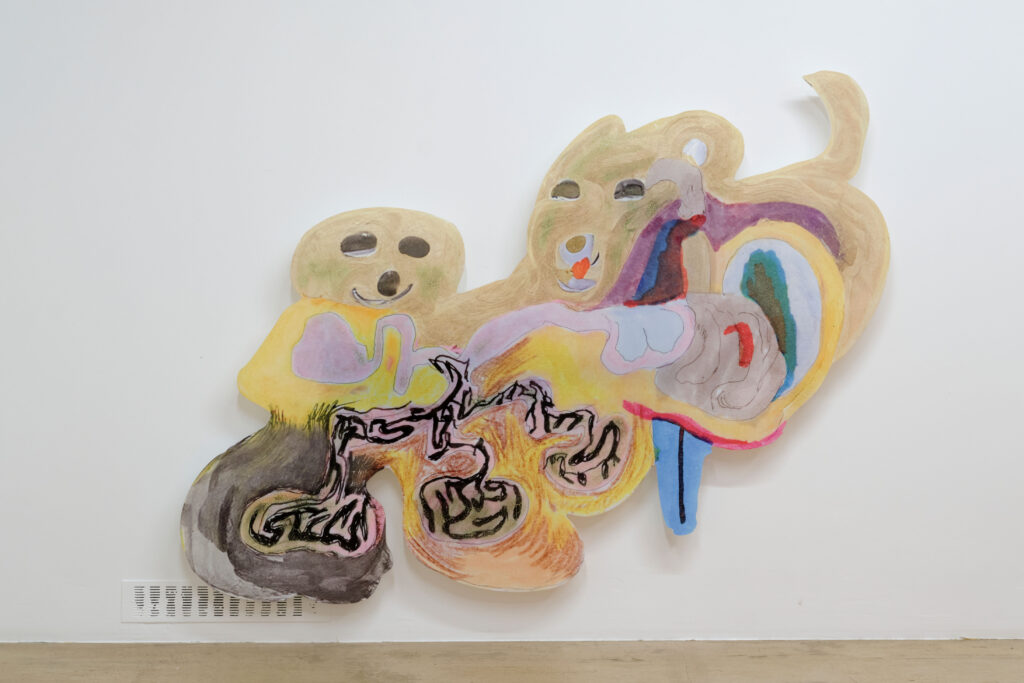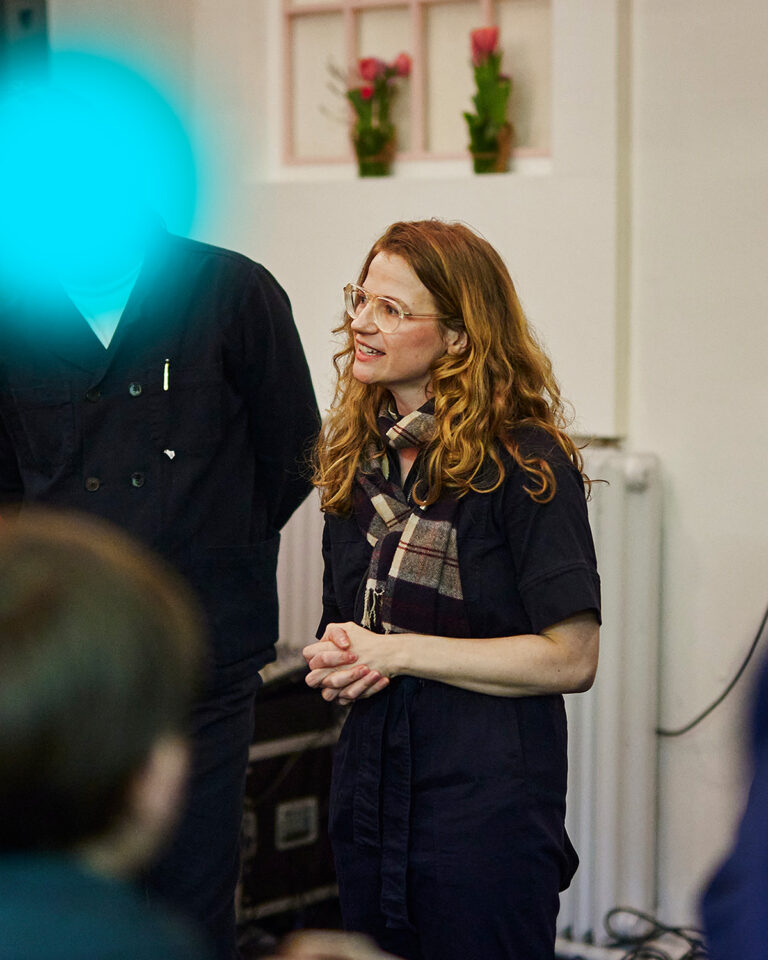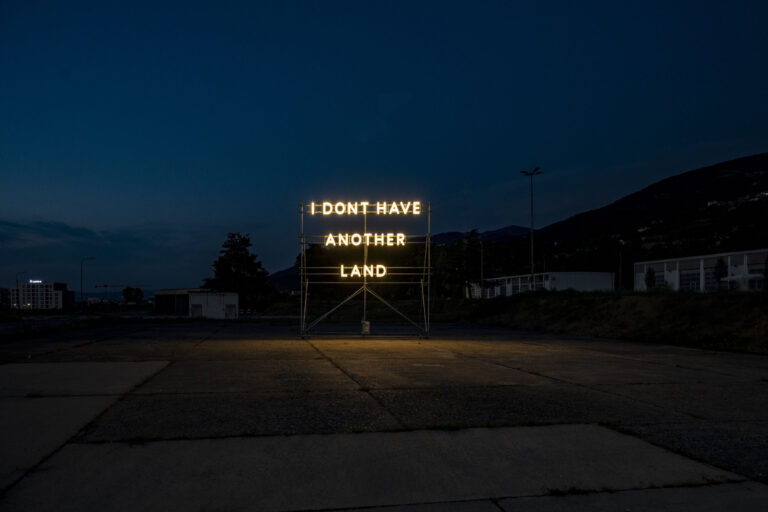Founded by Elīna Drāke, Elena Šalina, and Tīna Pētersone, Riga Art Week’s programme offered a comprehensive look at what the Baltics’ cultural landscape has to offer. Though it didn’t match the scale or tempo of major art capitals, Riga’s more intimate setting provided clear insight into an emerging scene that operates with its own distinct character. Here are the standout presentations from the week.
Kitty Florentine, Balance at Grīziņdārzs
Self-proclaimed as “the enchanting ethereal Estonian fairy of the art”, Kitty Florentine’s performance during the official opening night was certainly both enchanting and ethereal. Drawing the largest crowd I saw all week, we were gently herded into a spacious room where Florentine awaited. Kneeling on the floor, her hair extensions tethered to a larger, hair-covered sculpture behind her, she began with a haunting melody that slowly unfolded. The mood shifted, dark techno beats pulsed through the space before giving way to a brighter, poppier finale. While my British instinct flinched the moment audience participation was requested – joining the side of the room avoiding eye contact – Florentine managed to create an undeniable energy with the audience she brought into the centre for a final, communal dance.
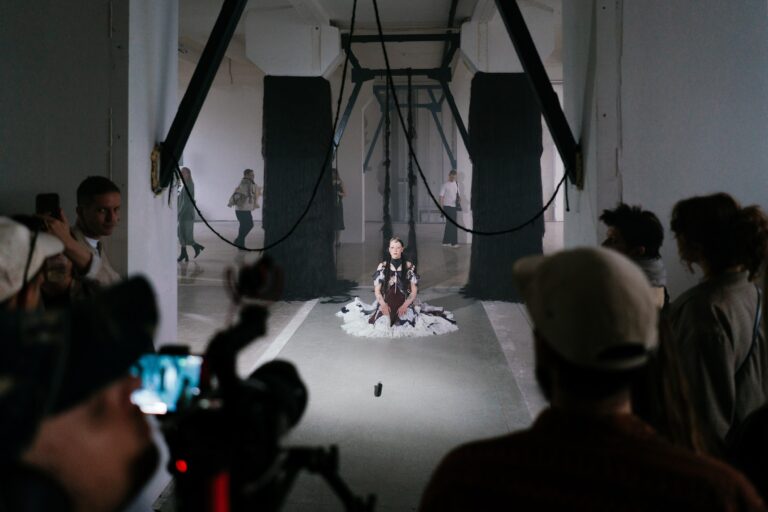
© Kitty Florentine’s performance Balance at Grīziņdārzs, courtesy of the artist.
The Bureaucrat Who Secretly Reads Poems at Pilot
Riga Photography Biennial — NEXT 2025 “Emerging Curator!” award-winner Roberta Atraste’s exhibition The Bureaucrat Who Secretly Reads Poems was the first show I encountered in Riga. Held at Pilot, the Art Academy of Latvia’s experimental art space, the group show takes the bureaucratic and administrative processes that underpin the art world as its starting point. What held my attention was Danish artist Sara Krøgholt Trier’s animated video work Do you see the crooked line in the wall (2024), which quietly stole the show. Set in an ambiguous cityscape, the film follows three figures – a teenager, a millennial, and a retired fortune teller – as they encounter one another and reflect on shared experiences. The atmosphere is steeped in surveillance: CCTV cameras linger, the city appears abandoned, no longer a place of social exchange but one of eerie isolation.
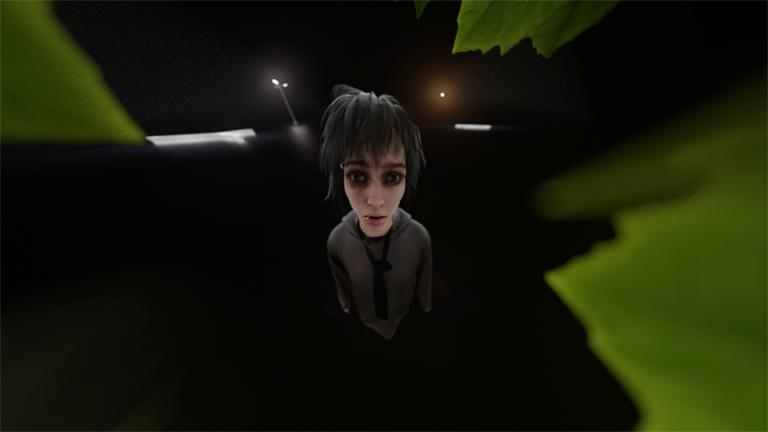
Still from © Sara Trier, Do you see the crooked line in the wall (2024), courtesy of the artist.
Jānis Dzirnieks at Kim? Contemporary Art Centre
Jānis Dzirnieks’ solo exhibition Healthy Friends conjures a warped, psychedelic ecosystem, where digital manipulation, painterly gesture and sculptural assemblage bleed into one another. The show is primarily composed of scanned scribbles and watercolour drawings that have been digitally enhanced, UV-printed, and then physically altered, resulting in wall-mounted works that hover somewhere between painting, relief, and mutant biological specimens. A personal favourite was Idler in Thermal Load (2024–25), a UV print on used acrylic glass, epoxy resin and steel. It resembles a gingerbread man entangled with a dog-like form, their bodies swirling with vibrant washes of pink, purple, yellow and red – both grotesque and endearing, like hallucinated cartoon characters caught mid-mutation.
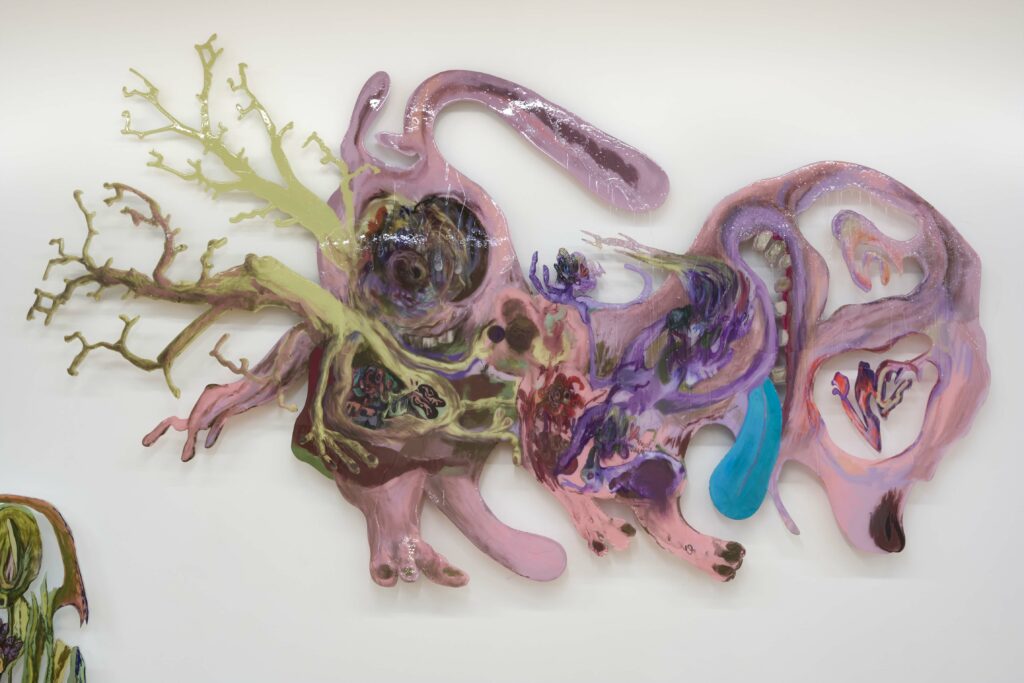
© Jānis Dzirnieks, Idler in Thermal Load (2024–25), courtesy of the artist.
Agate Tūna at ASNI
Agate Tūna’s solo exhibition Volentity explores quartz crystal as both a mediator of spiritual energy and a core component of today’s technological landscape. In her latest series, Tūna creates a visual diary of visible and invisible sensations, tracing the ways energy, memory, and identity shift under technological influence. Working with mirrors, glass, copper wire, and scanning techniques, Tūna manipulates raw film through a range of multimedia processes, reinterpreting the results onto plexiglass forms and chemigrams. The outcome is a striking mix of psychedelic, inkblot-like sculptures – somewhere between Rorschach test and talisman – alongside hazy, intimate photographic prints that evoke the threshold between physical sensation and digital distortion. Tūna’s works hover in a liminal state between the material and immaterial. Images seem to melt, shimmer, or glitch, conjuring a sense of permeability between body, self, and memory in an increasingly hybridised world.
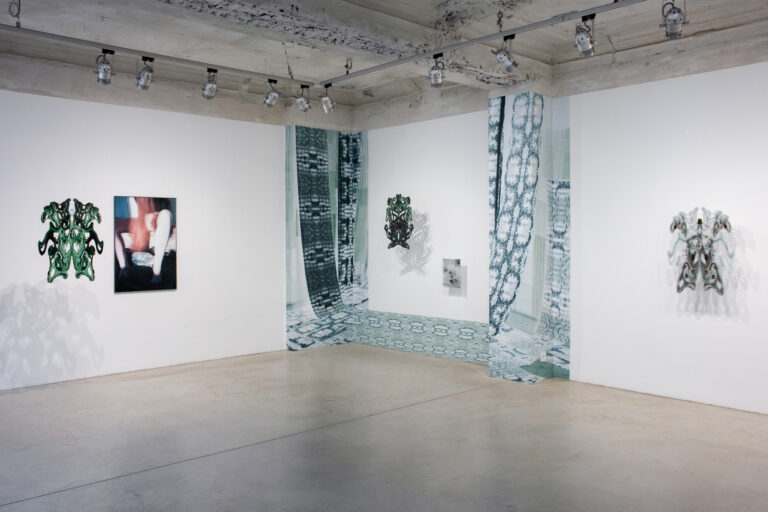
© Agate Tūna, Volentity at ASNI, installation view, courtesy of the artist.
Vika Eksta at ALMA
As part of the Riga Photography Biennial – NEXT 2025 which ran parallel to RAW, Vika Eksta’s Funeral Rite in Sloboda is a quietly powerful black-and-white series documenting the funeral of the artist’s aunt. Influenced by the photojournalistic style of Magnum photographers, Eksta set out to capture the event with as much objectivity as possible – choosing the role of observer over that of grieving relative, as a way to rise above the weight of personal loss. The resulting images offer a solemn, unsentimental portrait of a Catholic funeral in one of Latvia’s remote rural regions. But despite their composure, the final photograph quietly breaks that distance: mourners raise a glass, grinning openly at the camera, their faces softened by ritual and shared memory. In that moment, objectivity dissolves – and what remains is deeply, unmistakably human.
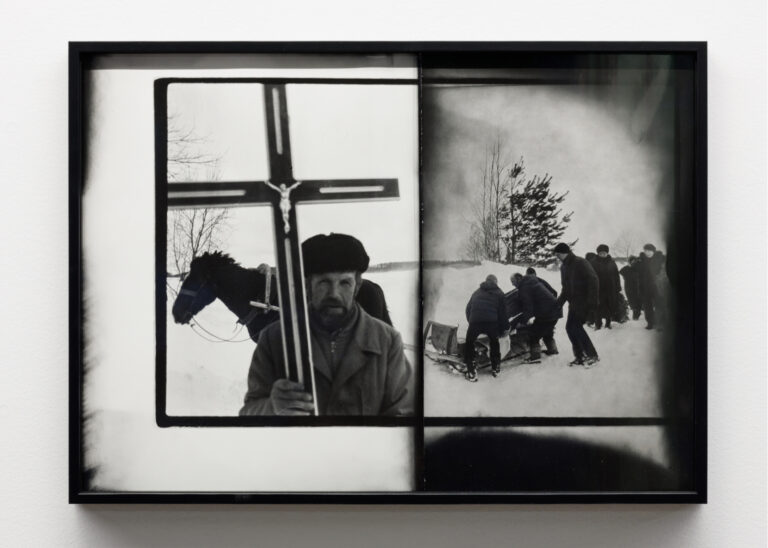
© Vika Eksta, Funeral Rite in Sloboda. Photo: Ansis Starks.
